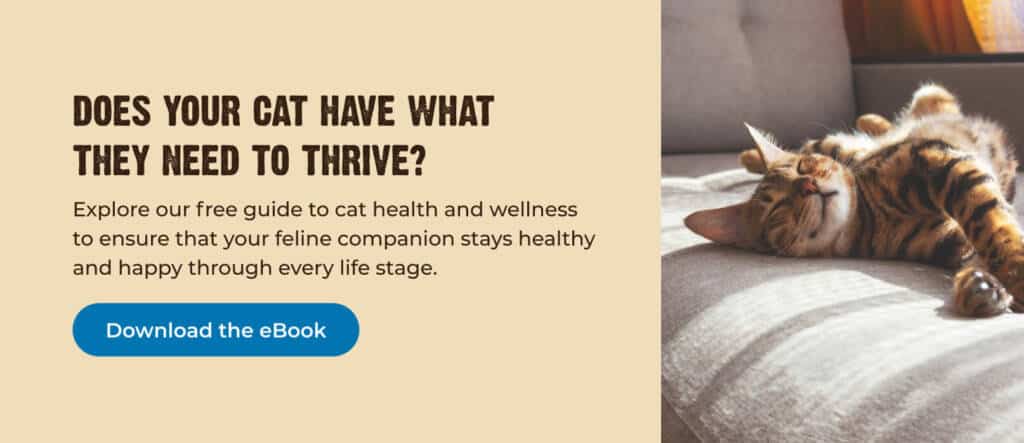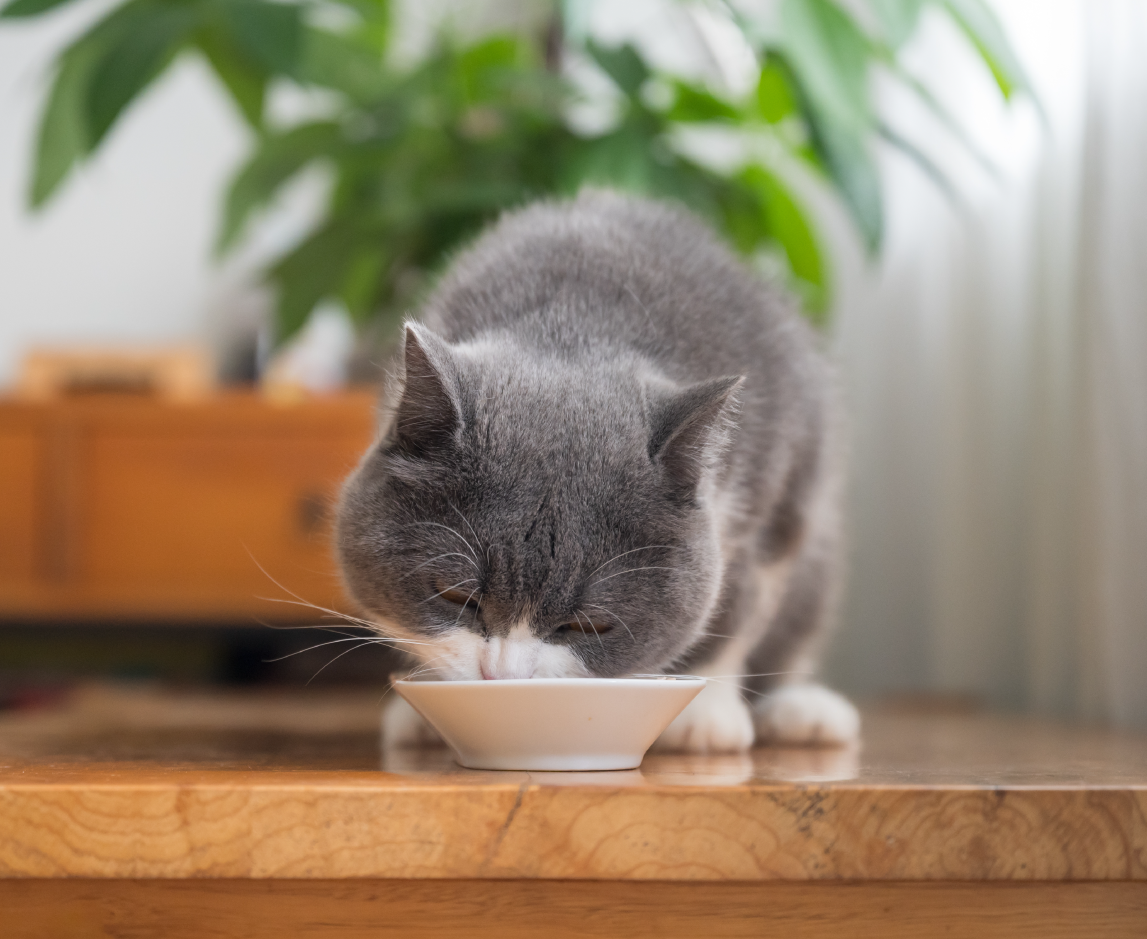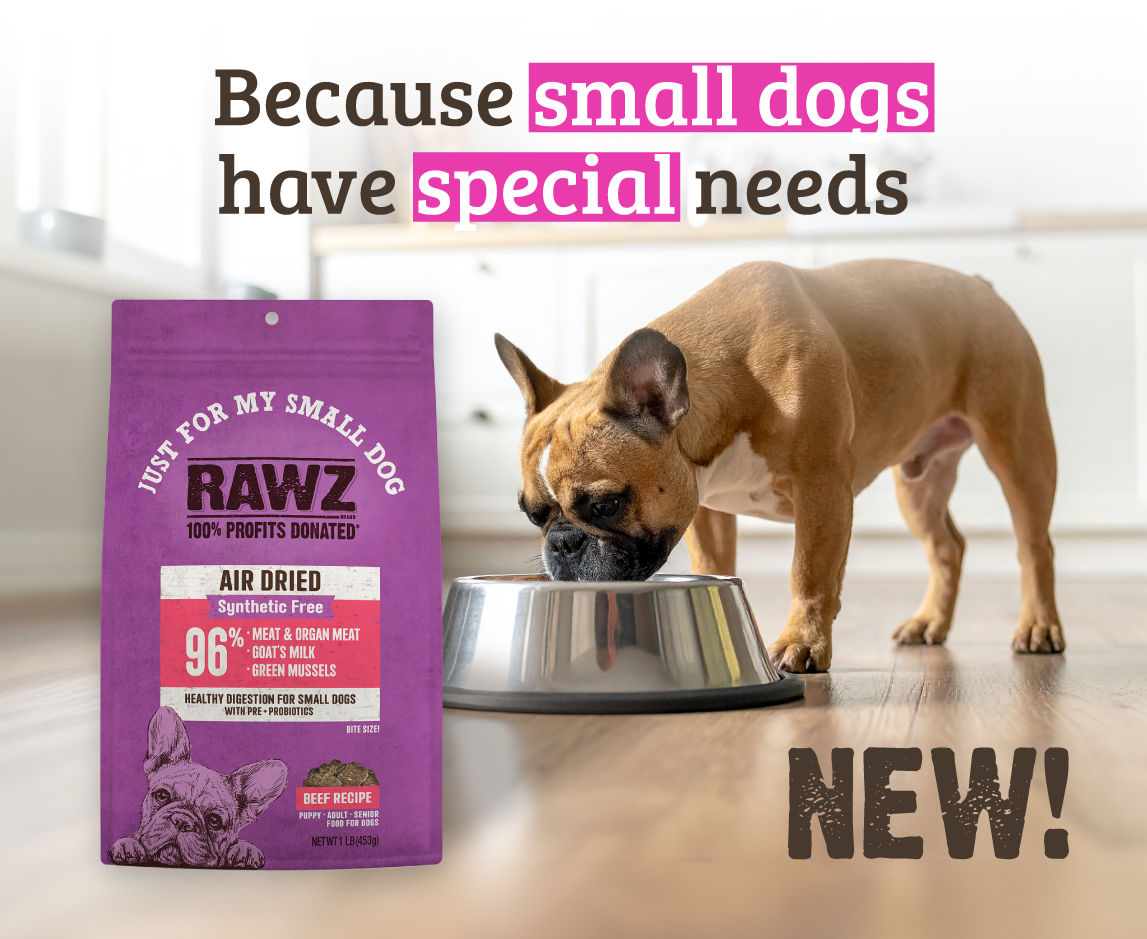The obesity epidemic among humans in the U.S. is well-publicized these days, and tips for losing weight seem to come from all directions. Interestingly, despite obesity affecting over 50% of domestic cats in the U.S., we don’t see nearly as much information on feline fitness. RAWZ is on a mission to change that! In this post, we’ll help cat parents develop a plan to guide their cats toward a healthy weight, leading them to longer and happier lives.
Why Should My Cat Lose Weight?
For many of us, looks are a major motivation for slimming down, but we also know that achieving and maintaining a healthy weight has numerous health benefits. While cats may not have the equivalent of a “bathing suit season” that motivates them to lose weight, there are multiple health benefits associated with healthy weight loss. In fact, cats that carry excess weight can experience health issues ranging from skin problems to organ failure to a reduced lifespan.
How to Start a Cat Weight Loss Program
The first step of any weight loss plan is to establish a target or goal weight. Consult with your veterinarian to identify or rule out any underlying conditions that may be causing your cat to gain weight, especially if the weight gain was sudden. PetMD also provides a helpful tool for determining your cat’s healthy weight range.
As with humans, weight loss in cats can be affected by two variables: diet and exercise. Your veterinarian will help you develop a sustainable and safe plan for helping your cat slim down.
How Much Should I Feed My Cat? Creating a Cat Diet Plan
It’s easy to get in the habit of free-feeding your cat: simply filling their food bowl when you notice it’s empty (or when your cat draws your attention to it). Unfortunately, this is an easy way to overfeed your cat. Cats can also fall into a pattern of eating out of boredom, or filling downtime by eating readily available food. You may find it easier to monitor your cat’s food intake by feeding measured amounts at scheduled times.
Most adult cats do well on a feeding schedule of two meals per day, roughly 12 hours apart. A cat’s stomach can only hold about 1–2 tablespoons of food at a time, so feeding them the correct amount of food at each meal is crucial to avoid overeating. Meals should contain adequate amounts of protein, nutrients and moisture (in the form of wet food). Always make sure your cat’s water bowl is filled with clean, fresh water, as adequate hydration can aid their metabolism and food satiety levels.
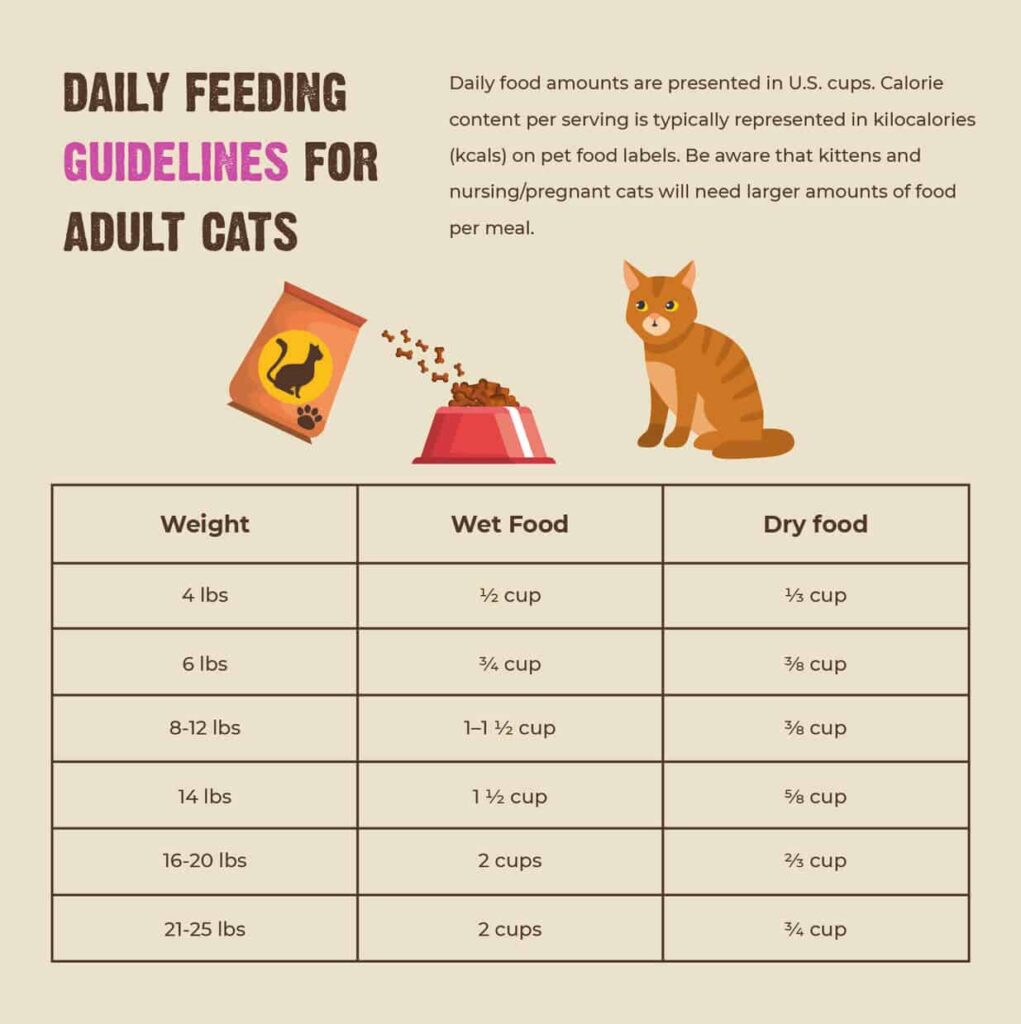
Download our guide, How to Read & Decode a Pet Food Label, to learn what all the pet food industry jargon really means. >
Veterinary Weight Loss Diets For Cats
While there are many commercially available weight management diets for cats, veterinarians will often recommend a prescription diet when substantial weight loss is required. These prescribed diets range from protein-focused foods with minimal carbohydrates, to recipes that increase metabolism by emphasizing specific nutrients. Your veterinary can guide you through the options that will be safest and most suited to your cat’s needs.
How To Introduce a New Diet To Your Cat
Most cat parents are well aware that cats can be picky eaters, so the thought of switching up your cat’s diet may be daunting. While it will generally take 5–7 days for a cat’s GI tract to adjust to a new food’s nutritional profile, finicky cats can take as long as 2–3 weeks. It often helps your cat’s digestion to keep the protein source in both the new and old foods as similar as possible (e.g., replacing one predominantly chicken-based food with another). Patience is key as you and your cat work toward improving their health. Monitor their response to the new food, and call your vet if they have any reactions that seem out of the ordinary.
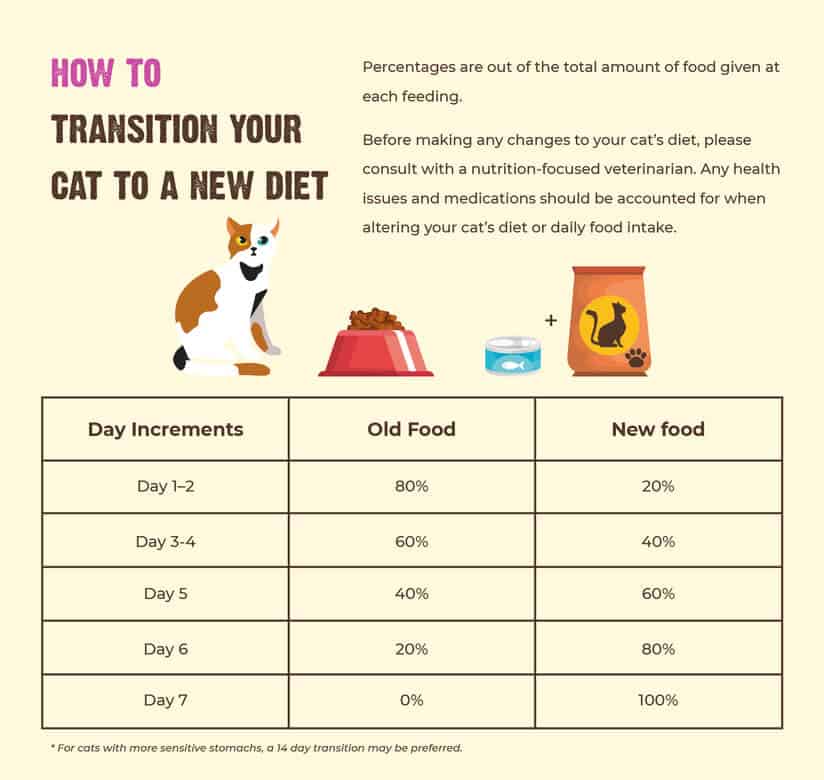
Encouraging Your Cat To Exercise
Exercise doesn't have to involve a treadmill and a gym membership for your cat — exercise is simply movement that results in energy expenditure. Whether your cat prefers chasing a laser pointer, playing with a stick-and-string toy or climbing a scratching “tree,” any kind of playful engagement activity counts as exercise.
FAQs
What if I have multiple cats in my household?
For those who own multiple cats, it’s often convenient to feed all the cats at once. However, this can result in unequal caloric intake. While the term “alpha” is typically associated with dogs, a strong-willed leader will often emerge in multi-cat homes. Cats who exert dominance over others, or who possess a greater drive to eat, will often consume unnecessarily large amounts of food. While not as convenient for cat owners, it may be necessary to feed each individual cat in a separate area to ensure that they consume an appropriate amount of food.
I can’t seem to get my cat engaged in play activities. What do I do?
Famous for being strong-willed — if not downright stubborn — cats may resist any efforts to get them moving. Capitalize on your cat’s classification as an obligate carnivore by incorporating hunting into their meal time. A cat’s natural hunting instinct can also be integrated into play: Cats love to “catch” toys that are dragged, dangled or tossed. Just be sure not to offer your cat any toys that may splinter, break or pose a choking hazard.
Why is my cat hungry all the time?
Cats possess a naturally low thirst drive, and they will often interpret the feeling of dehydration as hunger. This can lead to overeating or near-constant begging for food. Any food with a high moisture content can increase hydration while reducing overall caloric consumption — win-win! RAWZ offers many nutritionally complete wet food options that are all gum-free. Consult your vet if your cat continues to beg for food despite increased hydration, as it may be a sign of a more serious health issue.
How RAWZ Can Help
While not specifically formulated or marketed for weight loss, RAWZ offers many options that can be included in your cat’s weight reduction plan. Our two meal-free dry recipes for cats are protein-rich and contain optimal fat levels. Both low-carbohydrate formulas have a high meat content and low glycemic load. Our gum-free wet foods offer real, delicious protein and crucial hydration without filler ingredients.
Make meal time a treat with our delectable Tapa and Sashi toppers, which provide your cat with another great source of moisture.



